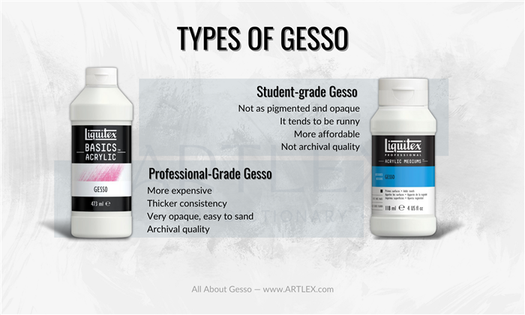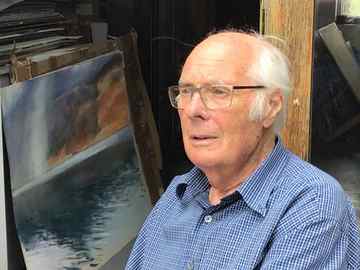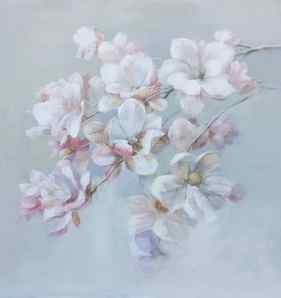In two-dimensional art, negative space can have a great impact. Consider the Chinese style of landscape paintings, which are often simple compositions in black ink that leave vast areas of white. The Ming Dynasty (1368–1644) painter Dai Jin’s Landscape in the Style of Yan Wengui and George DeWolfe’s 1995 photograph Bamboo and Snow demonstrate the use of negative space. This type of negative space implies a continuation of the scene and adds a certain serenity to the work.
The Element of Space in Artistic Media

Space, as one of the classic seven elements of art, refers to the distances or areas around, between, and within components of a piece. Space can be positive or negative, open or closed, shallow or deep, and two-dimensional or three-dimensional. Sometimes space isn’t explicitly presented within a piece, but the illusion of it is.
Using Space in Art
The American architect Frank Lloyd Wright once said that “Space is the breath of art.” What Wright meant was that unlike many of the other elements of art, space is found in nearly every piece of art created. Painters imply space, photographers capture space, sculptors rely on space and form, and architects build space. It is a fundamental element in each of the visual arts.
Space gives the viewer a reference for interpreting an artwork. For instance, you may draw one object larger than another to imply that it is closer to the viewer. Likewise, a piece of environmental art may be installed in a way that leads the viewer through space.

In his 1948 painting Christina’s World, Andrew Wyeth contrasted the wide spaces of an isolated farmstead with a woman reaching towards it. French artist Henri Matisse used flat colors to create spaces in his Red Room (Harmony in Red), 1908.
Negative and Positive Space
Art historians use the term positive space to refer to the subject of the piece itself—the flower vase in a painting or the structure of a sculpture. Negative space refers to the empty spaces the artist has created around, between, and within the subjects.
Quite often, we think of positive as being light and negative as being dark. This does not necessarily apply to every piece of art. For example, you might paint a black cup on a white canvas. We wouldn’t necessarily call the cup negative because it is the subject: The black value is negative, but the space of the cup is positive.
What is space in art?
Space in art refers to the visual area or environment created by a work of art. It is one of the most vital elements that artists use to create impactful works. This can refer to the space within an object, between objects. It can also refer to the negative space in an artwork which is devoid of subjects or objects. Therefore space in art is essentially the relationship between subjects and objects.
From the space in art, viewers can infer important information about the artwork and the environment. This is based on the relationship between subjects and objects. Artists use line, colour and space to create a sense of dimension, depth and perspective. For example, you can understand basic information about a subject, such as whether they are sitting, standing or lying down and the relationship to the surfaces and objects in the artwork.
The effect of space in art

By using space in art, the artist can emphasise a particular subject and create a focal point. Use space to lead the viewer’s eye in and to create a sense of rhythm in the art piece.
Space can be manipulated by artists to evoke a variety of emotions, from harmony to feelings of unease or tension. For example, multiple objects placed in close proximity can create a sense of unease, but it also creates unity and cohesion between those objects. Whereas objects more evenly space can create a sense of balance. In this painting by Edvard Munch, the house is the middle draws the eye in and the surrounding, clustered overlapping trees make the house seem shielded. This contrasts to the barren land in the distance, where Munch has left more space between elements. This gives the viewer an impression of the scale of the landscape, the solitude of the house and the barrier between safety and the unknown.
Composition and space in art

One of the most common ways that artists create the illusion of space in their work is through composition. By arranging objects, figures, or other elements within the frame in a certain way, artists can direct the viewer’s eye to certain points and create an illusion of depth and distance.
For example, objects will become gradually smaller as they recede into the distance. The most prominent figure in an artwork will likely be the largest and placed at the forefront compared to other objects and subjects.
Artists can use the rule of thirds to place their main subject or focal point at one of the three intersections of the canvas. This is where the viewer’s eye will likely be drawn first.
How to Create Three-Dimensional Space in Art
Now that you have an idea of the types of space in art, it is also important to understand how these can be created. There are several techniques that we outline below that can be applied in numerous ways to create the effect of three-dimensionality and depth.
Perspective
Various types of perspectives will create the effect or illusion of three dimensions, for example, linear and atmospheric perspectives, both of which we mentioned in the above Christ Giving the Keys of the Kingdom to St. Peter painting.
Linear perspective utilizes parallel lines that converge (referred to as orthogonals) on a focal point (otherwise known as a vanishing point) on the horizon line.
Another example of linear perspective includes the fresco by the Renaissance artist Raphael The School of Athens (1509 to 1511). The focal point here is between the central figures who are Plato and Aristotle. We will also see this perspective in Leonardo da Vinci’s The Last Supper (c. 1495 to 1498). The converging lines here along the walls converge to Jesus Christ’s head and the window behind Him.

The School of Athens (1509 – 1511) by Raphael, located in the Musei Vaticani in the Vatican City, Italy; Raphael, Public domain, via Wikimedia Commons
Foreshortening is another important technique that many artists apply. It is often described in terms of how the subject matter “recedes” in space. A popular example often mentioned is Lamentation Over the Dead Christ (c. 1480) by Andrea Mantegna. Here, we see how the figure of Jesus Christ appears almost short or as some describe it “compressed” giving the illusion of spatial depth.
Furthermore, this technique also creates a heightened emotional effect and draws us, the viewers, into the composition, as if we are in the scene.
Overlapping
Overlapping refers to when two or more objects are placed one in front of the other in a composition. The object in the forefront will appear closer to us compared to the object that is placed behind it, which will appear further to us.
Position and Size
Position, often also termed placement, can go together with size. When the subject matter is placed in the lower portion or forefront of a visual composition, it will appear larger in size than the subject matter placed in the upper portion, or middle ground to the background, which will appear smaller in size, creating the illusion of depth.
It is also important to remember that there is a myriad of ways to utilize placement and sizing of subject matter.
Color and Value
Color and value can also create depth through different techniques like highlights and shading. This can also include giving subject matter less visible detail in terms of color in the background and more detail in the foreground, which will distinguish depth.
This is also where color value can appear lighter in the background and darker as it is more in the foreground.
Creating Some Space
In this article, we explored the definition of space in art by looking at the main types of space as well as the techniques utilized to create it. While many of the techniques mostly relate to two-dimensional spaces becoming three-dimensional, like photographs, paintings, or drawings, we must not forget that these techniques can equally apply to already three-dimensional spaces like sculptures or architecture.
Although these are guidelines and tools mentioned, as artists and art historians, it is important to remember there is no “one size fits all” when it comes to creating art. There are many methods and applications that will create space in artworks from abstract to realistic. Furthermore, these guidelines will also provide you with the necessary visual tools when you look at an artwork. We leave you with this question: what is the space around you composed of?
Learn everything about the Elements of Art
We have written a series about all the elements of art, if you would like to dive a bit deeper into the topic:
What Is Space in Art?
Space in art refers to the area in a two-dimensional visual composition like graphic art, painting, or drawing, as well as a three-dimensional sculpture or architectural structure. It comprises the total area surrounding the subject matter, which can be inside, around, in between, below, and above.
What Are the Types of Space in Art?
There can be positive and negative space in art, as well as deep and shallow space, two-dimensional, three-dimensional, and closed or open spaces. All these types can be created through different techniques like perspective, color, positioning, sizing, and more.
What Is Positive and Negative Space in Visual Art?
Positive space in art is the subject matter of a visual composition. It is the so-called active occupied space, whereas the negative space is the so-called passive space, which is the area around the main subject matter. The negative space is also as important as the positive space because it can create emphasis and set a specific mood. Both types of spaces can also interact with one another.
Alicia du Plessis ( Author and Art History Expert )
Alicia du Plessis is a multidisciplinary writer. She completed her Bachelor of Arts degree, majoring in Art History and Classical Civilization, as well as two Honors, namely, in Art History and Education and Development, at the University of KwaZulu-Natal, South Africa. For her main Honors project in Art History, she explored perceptions of the San Bushmen’s identity and the concept of the “Other”. She has also looked at the use of photography in art and how it has been used to portray people’s lives.
Alicia’s other areas of interest in Art History include the process of writing about Art History and how to analyze paintings. Some of her favorite art movements include Impressionism and German Expressionism. She is yet to complete her Masters in Art History (she would like to do this abroad in Europe) having given it some time to first develop more professional experience with the interest to one day lecture it too.
Alicia has been working for artincontext.com since 2021 as an author and art history expert. She has specialized in painting analysis and is covering most of our painting analysis.
Learn more about Alicia du Plessis and the Art in Context Team.



